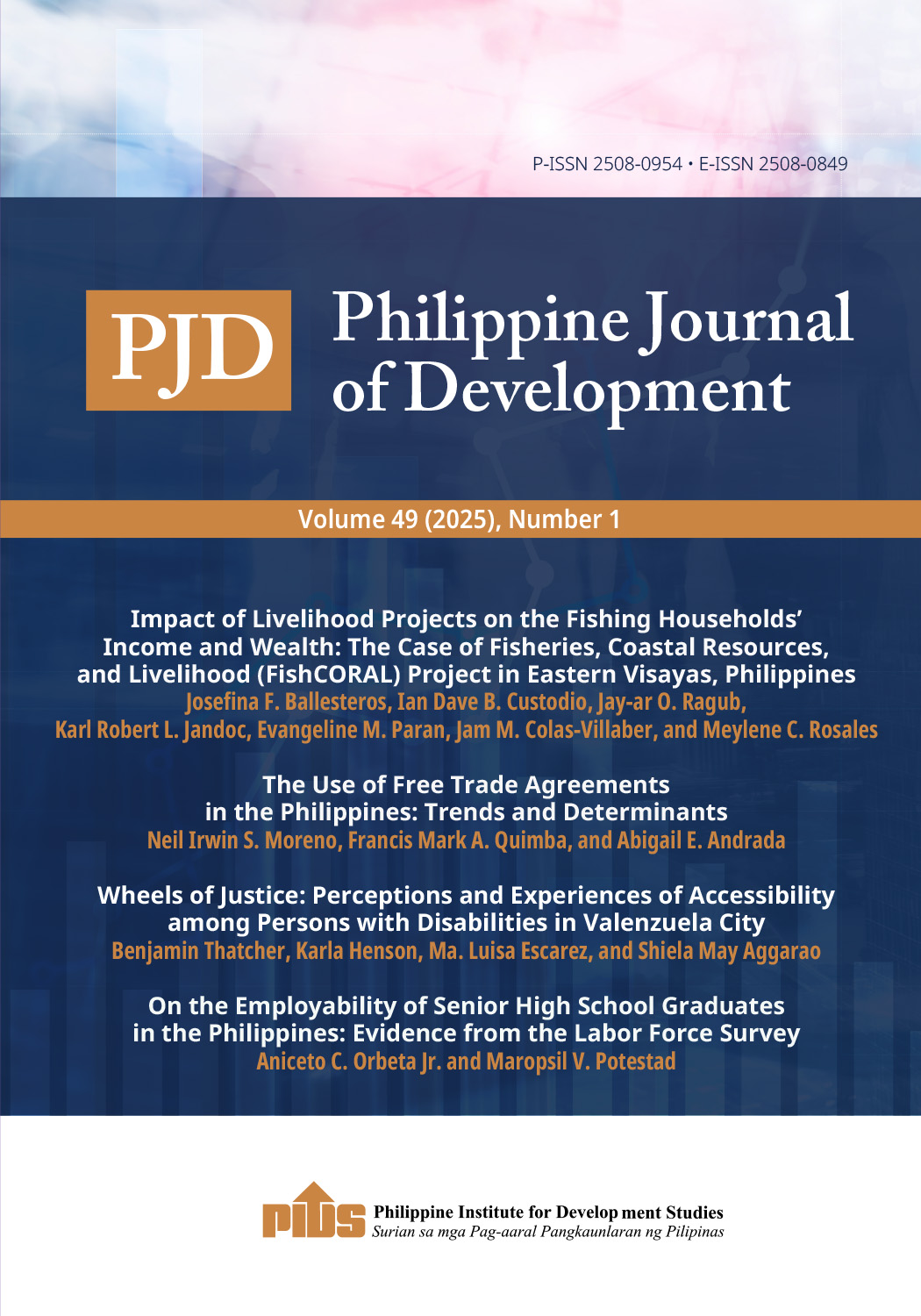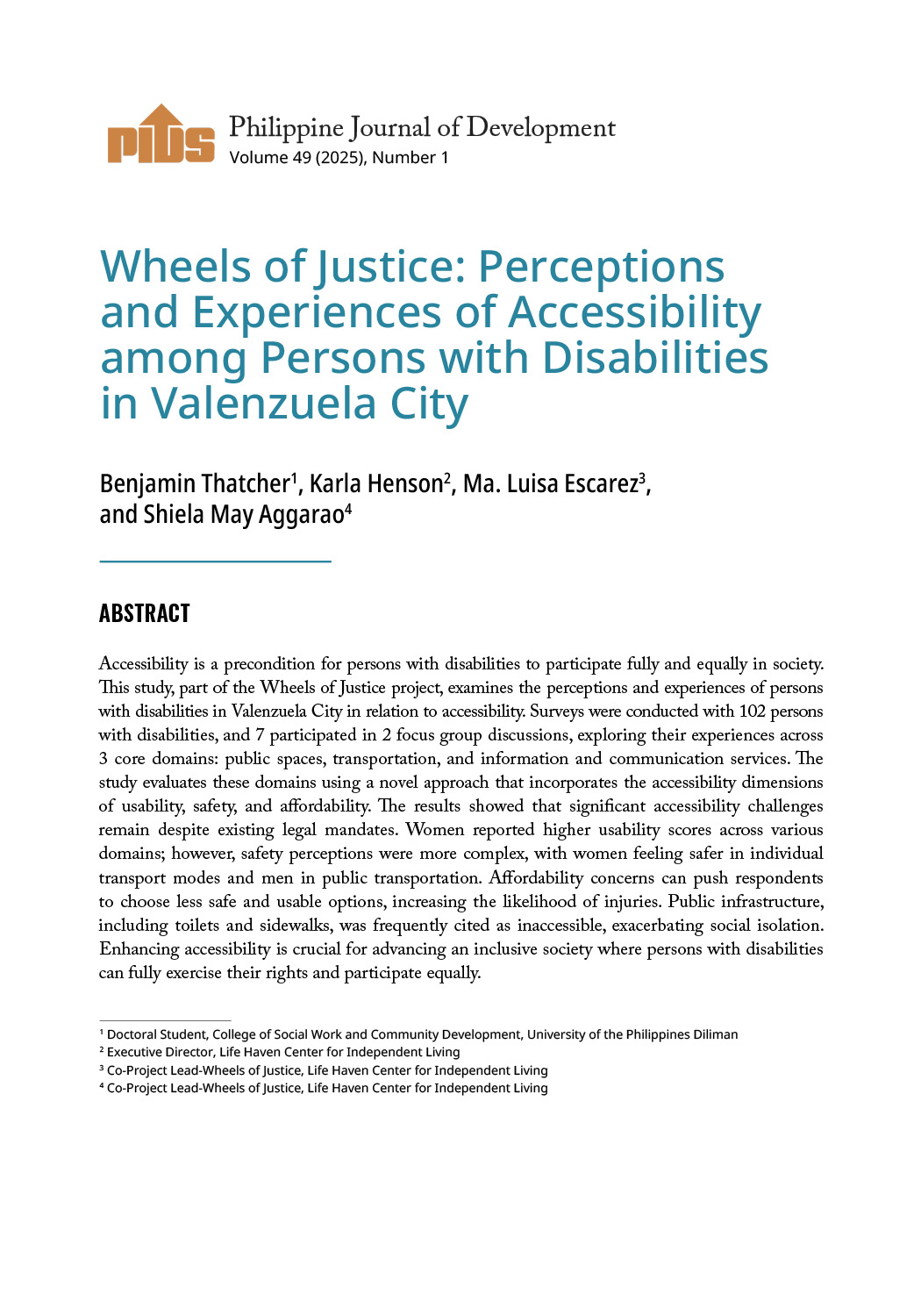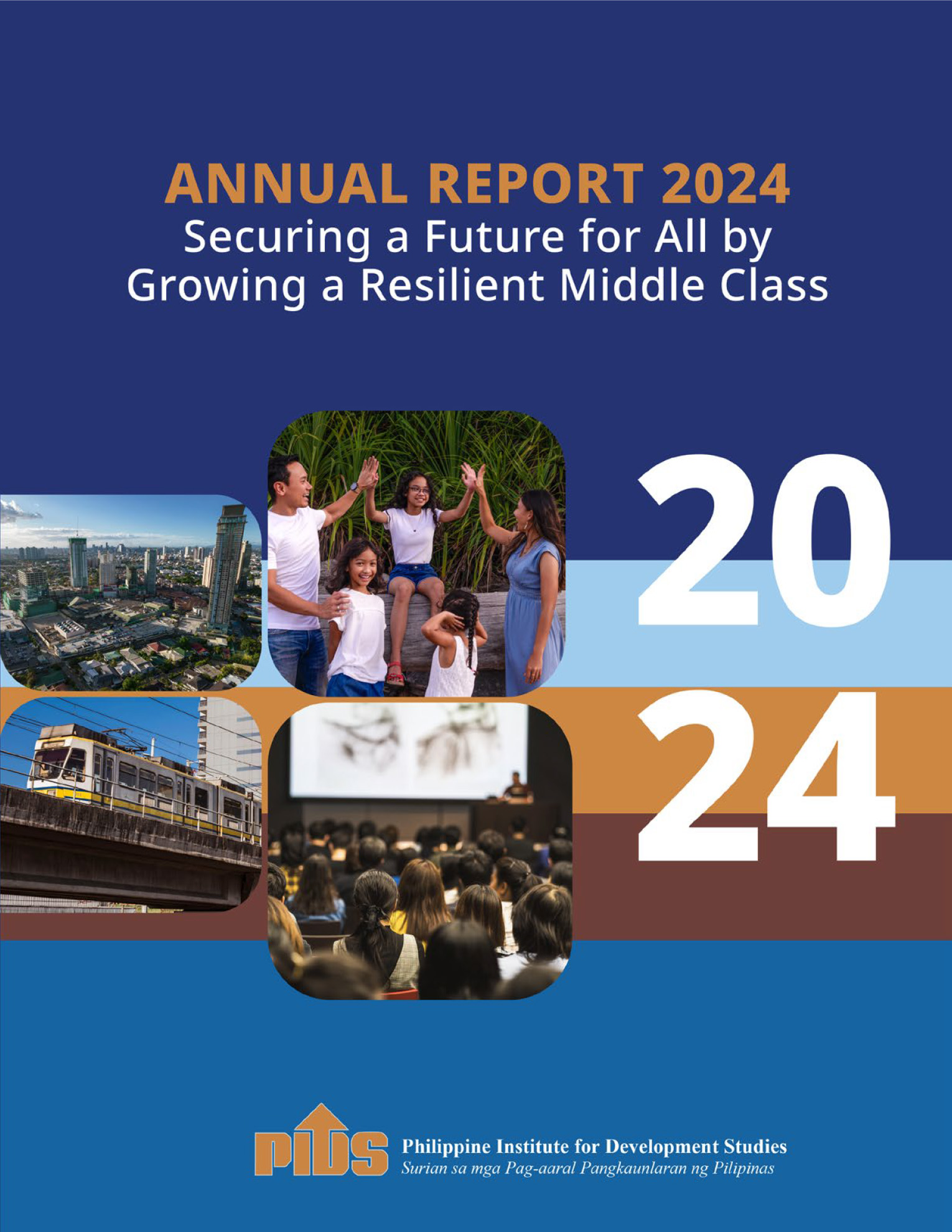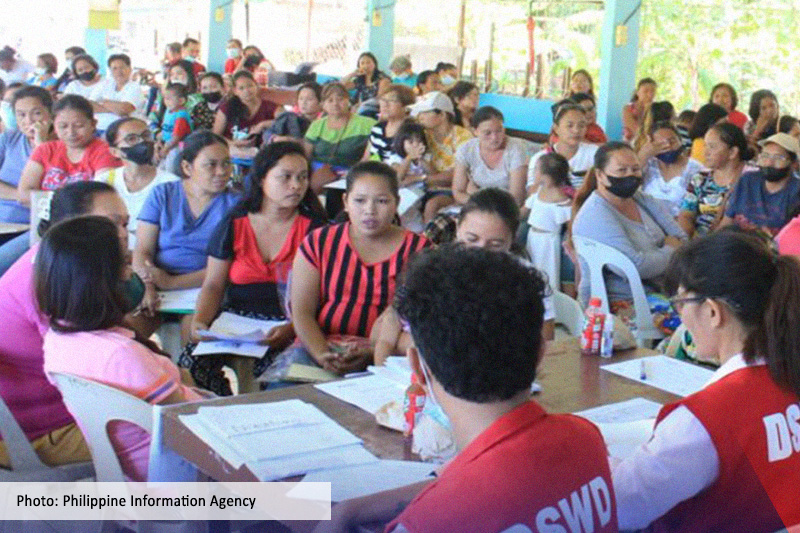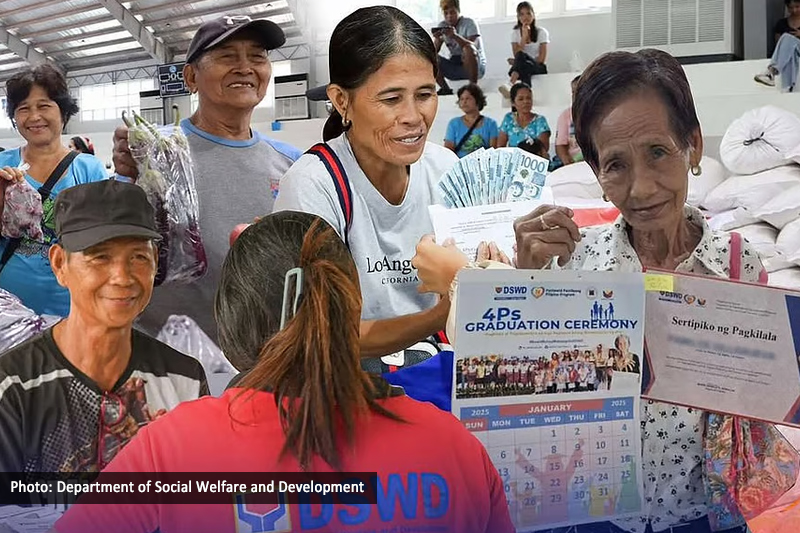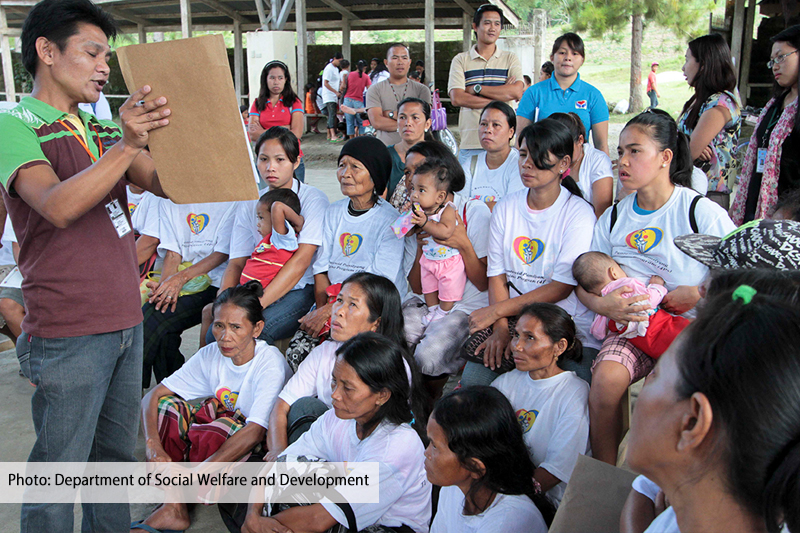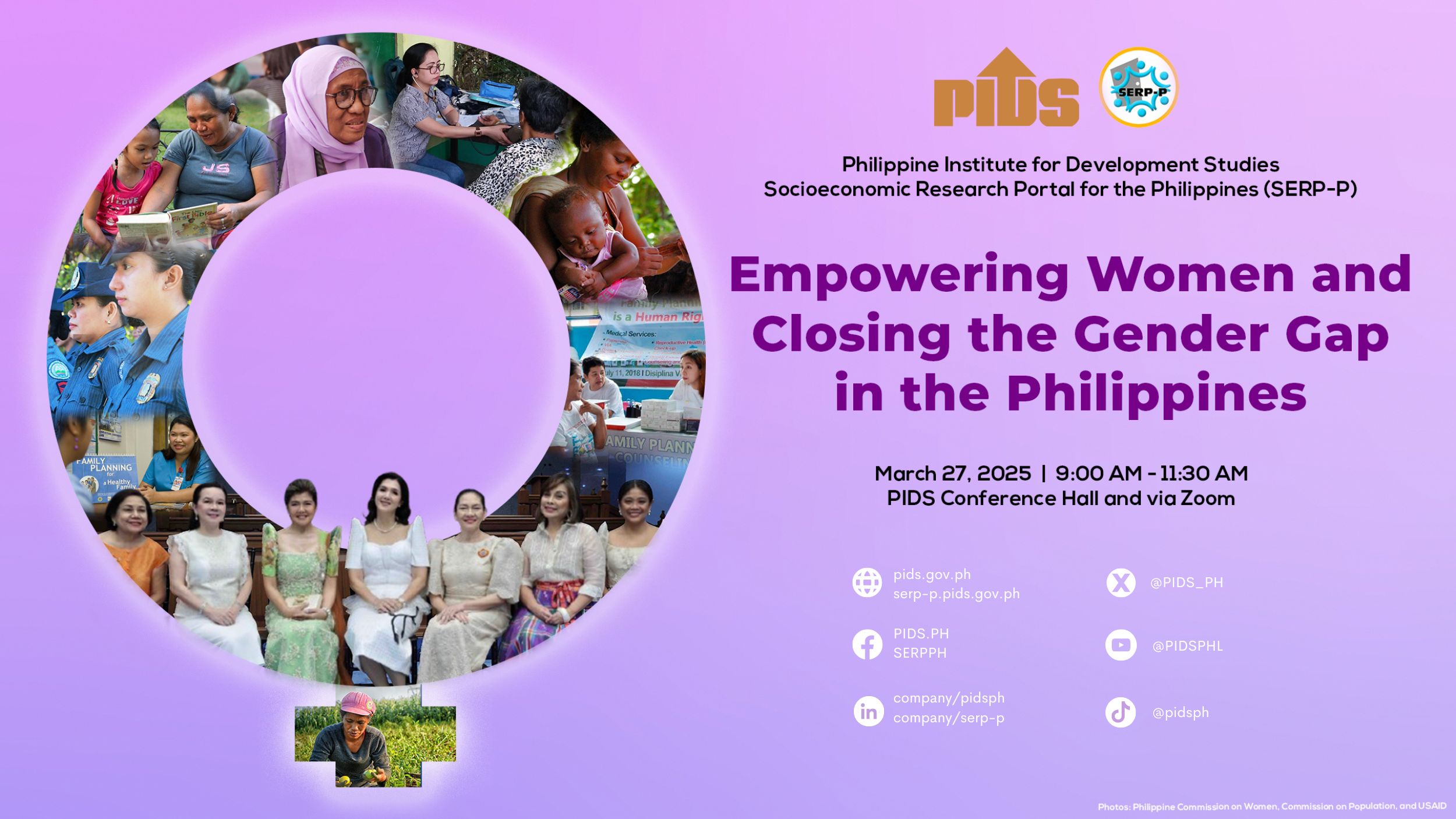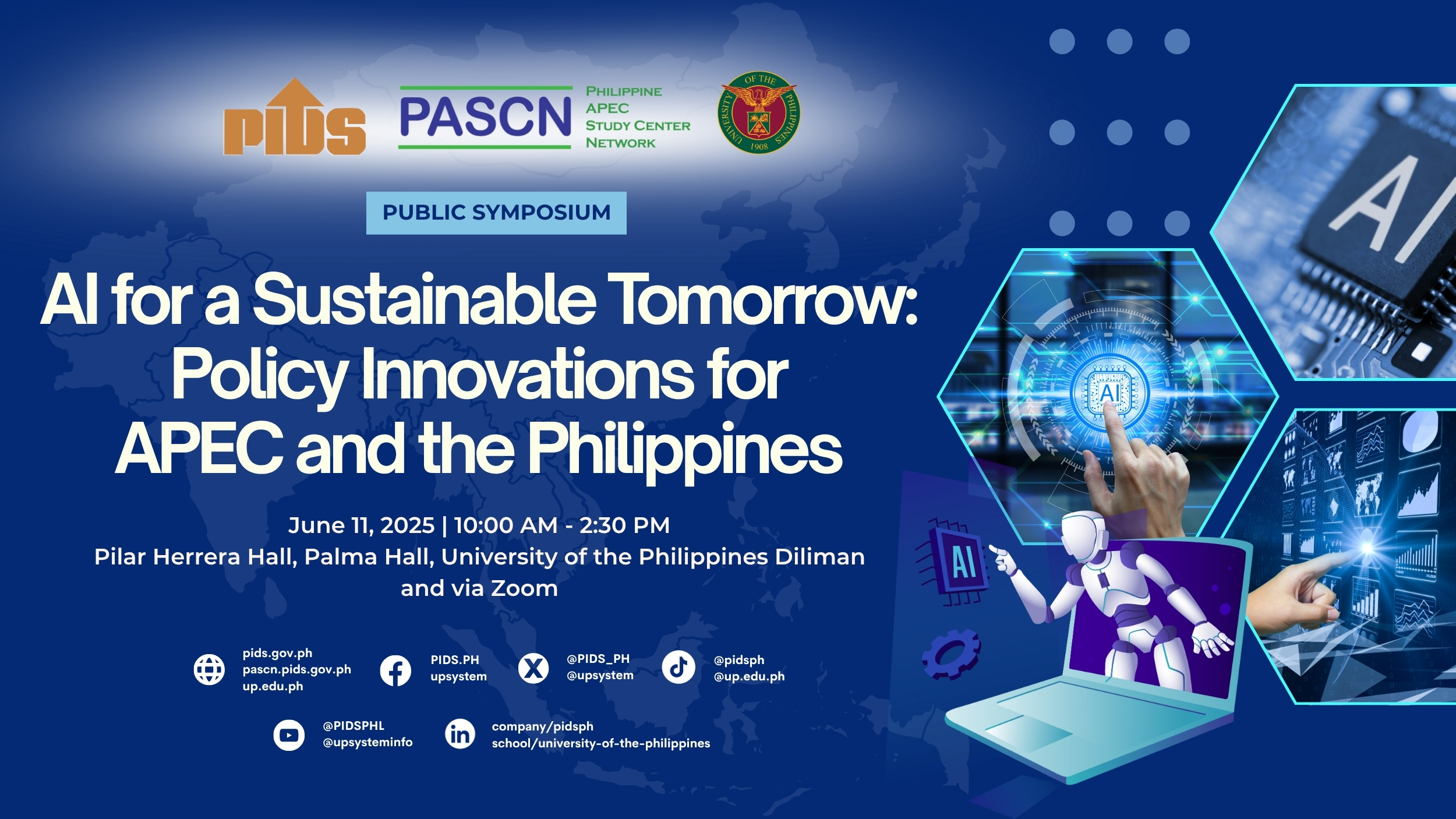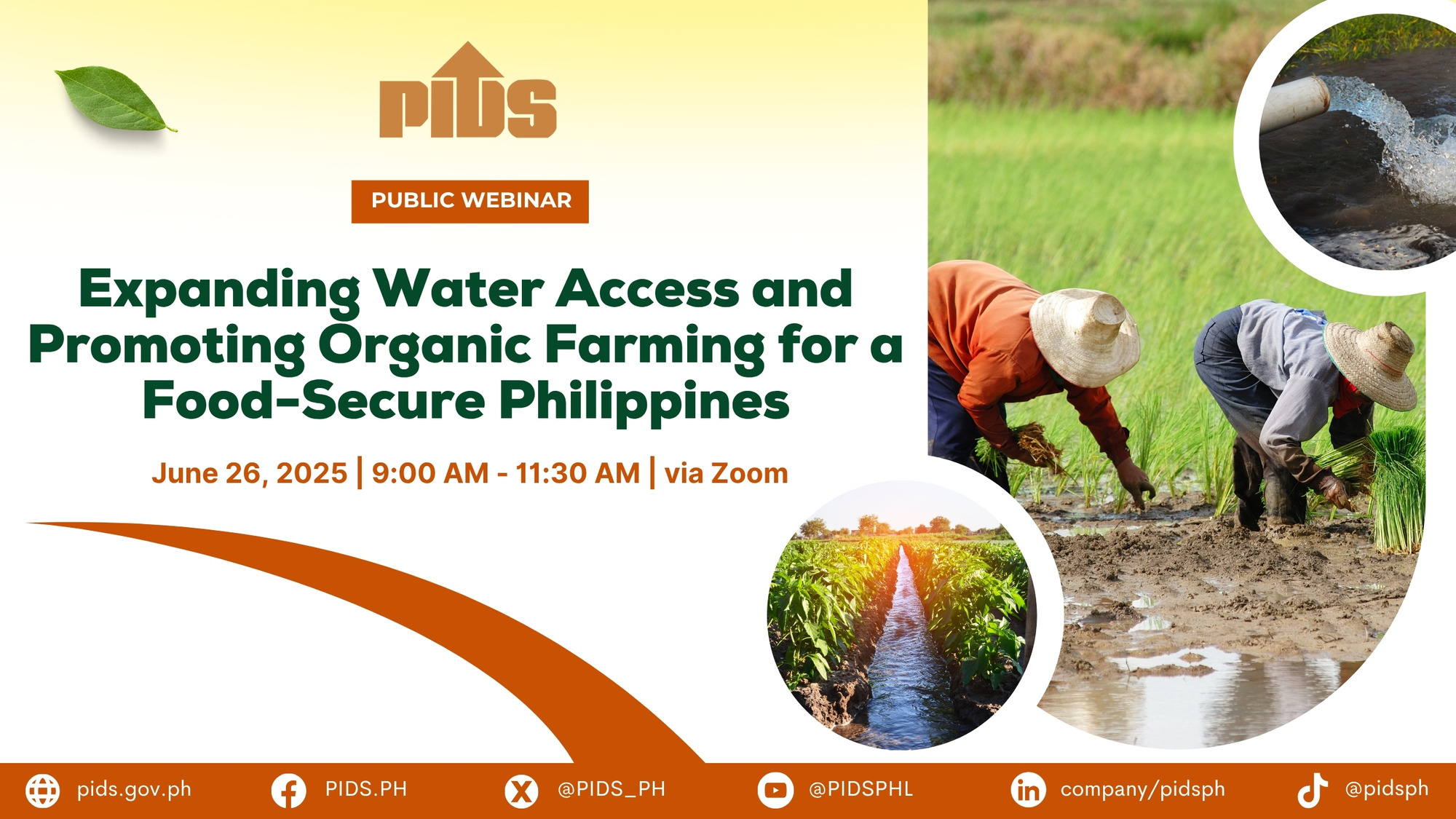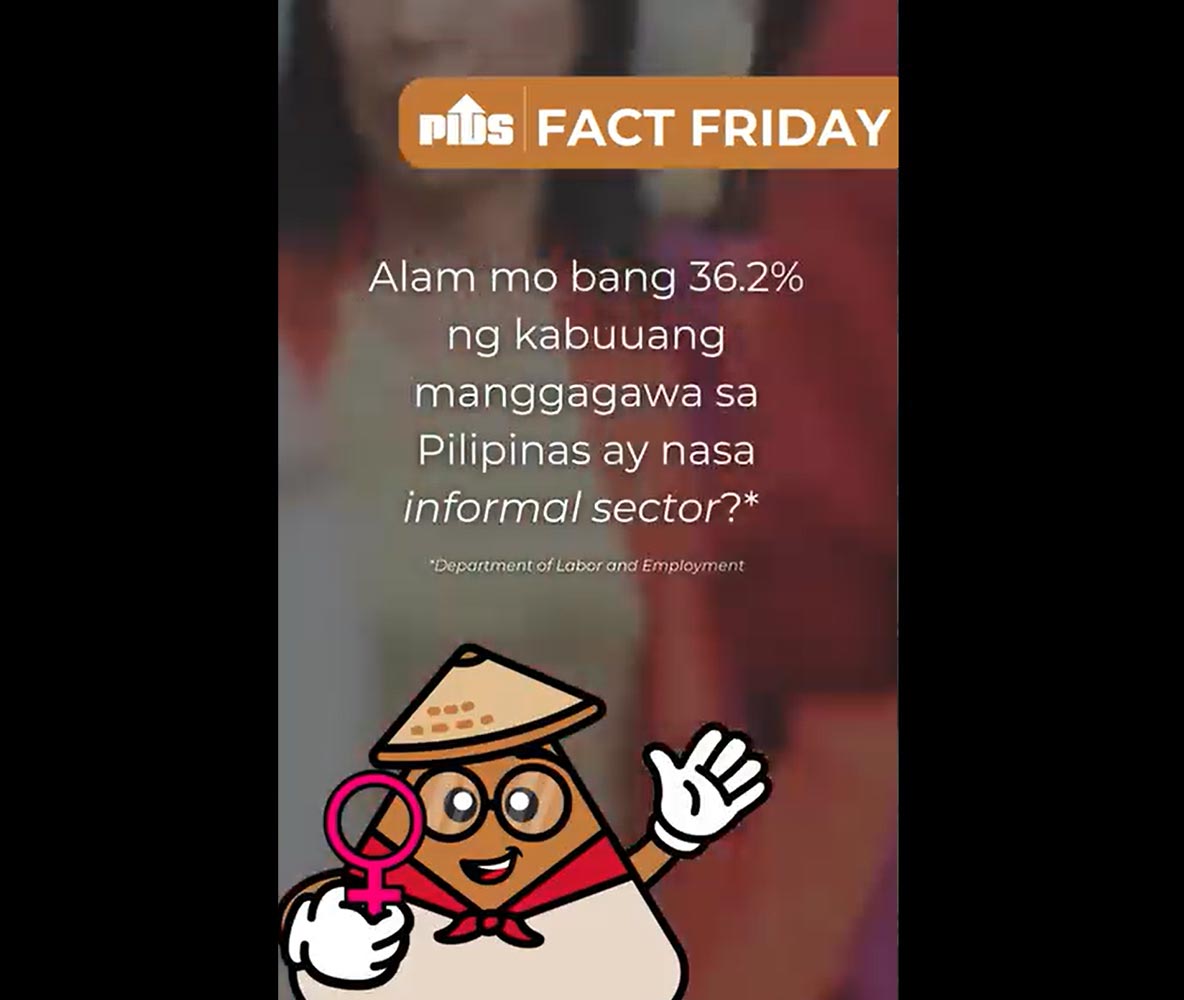The middle class plays a crucial role in driving economic growth and development in many countries. In the Philippines, the expansion of the middle class is seen as an important indicator of economic progress, improved living standards, and social stability. As the primary driver of consumer spending and a key source of human capital, understanding and supporting this segment of society is essential for sustainable economic development. Recent data from the 2021 Family Income and Expenditure Survey (FIES), conducted by the Philippine Statistics Authority (PSA), provides valuable insights into the composition, growth, and challenges facing the Filipino middle class.
There is no single agreed-upon definition of the middle class. Sociologists often define it in terms of education, occupation, and social values, while economists tend to use income-based measures.[1] In the Philippines, market researchers also cluster households into five socioeconomic classifications based on the quality of consumers (i.e., employment and educational characteristics of family members), as well as household assets, amenities, and facilities.[2] Much of the economic literature, on the other hand, uses monetary measures (e.g., income or consumption) to define the middle class.[3]
An approach in the Philippines that is gaining popularity is to define the middle class as those households with per capita incomes between 2 and 12 times the official poverty rate.[4] Using this definition, about 40% of the Philippine population belonged to the middle-income class in 2023.
Figure 1 shows that for a family of five in 2021, the monthly family income thresholds for the middle class translate to a monthly income range of approximately PHP 25,000 to PHP 145,000. This definition groups households with incomes substantially above subsistence levels but below those of the upper echelons of society. By this definition, as much as 4 in 10 Filipinos (39.8%) and nearly half (47.4%) of families can be considered middle-income class
Figure 1. Who are the Filipino Middle Class? Source:https://www.facebook.com/photo/?fbid=944075541089783&set=a.226989579465053
The middle class can be further broken down into three sub-groups:
- Lower-middle income: those with per capita incomes between 2-4 times the poverty line
- Middle-middle income: those with per capita incomes between 4-7 times the poverty line
- Upper-middle income: those with per capita incomes between 7-12 times the poverty line
This income-based definition allows for tracking the size and characteristics of the middle class over time using household survey data. However, it is worth noting that income alone does not fully capture all aspects of middle-class status and values.[5]
A RISING TIDE: CHARTING MIDDLE CLASS GROWTH
The growth trajectory of the Filipino middle class has been remarkable over the past three decades, expanding from 28.5% of the population in 1991 to 39.8% in 2021 (Figure 1). The share of the middle class peaked at 43.5% in 2018 before declining to 39.8% in 2021, likely due to the economic impact of the COVID-19 pandemic. This recent setback underscores the vulnerability of the middle class to economic shocks. It also highlights the need for robust social protection systems and other strategies.[6]
The growth of the Philippine middle class has been relatively slow compared to that in some other countries, especially in the region (i.e., if we adopt cross-country comparable data and thresholds). From 1990 to 2008, the middle class in Vietnam grew by 33 percentage points and in Indonesia by 12 points. The slower expansion of the middle class in the Philippines may be attributed to several factors:
- Periods of economic and political instability in the 1980s and early 1990s;[7]
- High levels of inequality that persisted despite economic growth and which led to slower poverty reduction; and
- Lack of structural transformation in the economy, with limited growth in the high-productivity sectors.[8]
The PSA reported that poverty went down from 2021 to 2023,[9] so it is expected that the share of the middle class rose in this period. However actual figures will only be available once the PSA releases the microdata of the 2023 FIES.
CHARACTERISTICS OF THE MIDDLE CLASS
Several studies have identified several key characteristics that distinguish middle-income households in the Philippines:
- Urban concentration: As of 2021, three-fifths (60.6%) of urban residents belonged to the middle class, compared to only a third (33.8%) among rural communities. Urban centres often offer more diverse employment opportunities and higher wages, contributing to the expansion of the middle class. However, quality jobs are dependent on high educational attainment and skills.
- Education: Middle-class Filipinos tend to have higher levels of education compared to low-income groups (Figure 2). In 2021, 40.6% of middle-class Filipinos aged 15 and above had completed a college education, compared to only 14.5% of their low-income counterparts.
Figure 2. How Educated are Low-, Middle- and Upper- Income Classes of Filipinos aged 15 and over. Note: Author’s computations from the 2021 FIES, PSA
- Employment:Middle-class workers are more likely to have stable formal-sector jobs. About 80% of employed middle-income individuals have permanent jobs, compared to 65% among low-income workers. They are also less likely to work in agriculture and are more concentrated in services and manufacturing.
- Family size:Middle-income households tend to have smaller family sizes, with an average of 4.2 members compared to 5.3 for low-income families. They also have lower dependency ratios.
- Asset ownership:Middle-class households have higher rates of ownership for consumer durables like refrigerators, televisions, and cars. They are also more likely to own their homes.
- Access to services:The middle class has better access to electricity, safe water, and sanitation compared to low-income groups.
These characteristics reflect the causes and consequences of achieving middle-income status. Higher education and stable employment help households attain middle-class incomes, while smaller family sizes and asset accumulation are often the results of improved economic status. Importantly, many of these middle-class characteristics — especially higher education levels and formal sector employment — are associated with greater economic resilience and upward mobility.
ECONOMIC ROLE OF THE MIDDLE CLASS
The middle class is often seen as an engine of economic growth and development. Economic theory and empirical research have identified several ways that a robust middle class can drive prosperity:
Financial news subscriptions
- Consumer demand: With higher disposable incomes, the middle class provides a key source of consumer demand for goods and services, helping to drive economic growth.[10] In the Philippines, middle-income households spend more on education, healthcare, and durable goods than low-income families.
- Human capital investment: Middle-class families tend to invest more in education and skills development for their children, building human capital that fuels long-term economic growth. The high value placed on education is evident in the Philippines, where middle-income families spend much more on education than low-income households.
- Entrepreneurship: In many countries, the middle class has been an important source of entrepreneurship and small business formation. However, in the Philippines, this effect appears more limited – lower-income groups actually have higher rates of self-employment and entrepreneurship, often out of necessity rather than opportunity.
- Tax base: A larger middle class provides a broader tax base to fund public goods and services. In the Philippines, the expansion of the middle class has coincided with growth in tax revenues.
- Demand for institutional quality: Middle-class citizens often push for better governance, institutions, and public services. However, this effect may be limited in the Philippines, where the middle class has shown a tendency to opt for private services rather than pressuring for improved public options.[11]
While the Philippine middle class plays some of these positive economic roles, its impact appears more muted compared with other countries. This may be due to the country’s limited size and economic vulnerability.
Political Influence of the Middle Class
The Philippine middle class has become increasingly influential in shaping political outcomes, but not always in ways that benefit broader development goals:
- Middle-class voters appear to have strongly supported populist candidates and policies in recent elections (this is in line with observations in other countries).[12]
- Government policies like free tuition at state universities and recent tax reforms have disproportionately benefited middle-income groups rather than the poor.
- There are indications that public spending is becoming more aligned with middle-class priorities (e.g., crime reduction) at the expense of pro-poor programmes.[13]
These trends suggest that the growing middle class is flexing its political muscle – but not necessarily in ways that promote inclusive development or strengthen democratic institutions. Some analysts argue this reflects the economic insecurity of the Philippine middle class, making them susceptible to populist appeals. Others point to a growing disconnect between middle-class Filipinos and the poor, with the former prioritising their narrower interests.
VULNERABILITIES OF THE MIDDLE CLASS
Despite its growth, the Philippine middle class remains economically vulnerable in several ways:
- Economic shocks:Many middle-income households, especially those in the lower-middle segment, remain at risk of falling into poverty due to job loss, health emergencies, or other shocks. The COVID-19 pandemic highlighted this vulnerability.
- Reliance on remittances:About 13% of middle-income households have a member working overseas, and many rely heavily on remittances. This leaves them exposed to external economic conditions and changes in migration policies.
- Job insecurity:While middle-class workers are more likely to have formal-sector jobs, many still face concerns about job security and limited opportunities for advancement.
- Education quality concerns: Although middle-class families invest heavily in education, there are growing concerns about the quality and relevance of education in preparing young people for a vastly changing job market, especially given increased automation.
Financial news subscriptions
These vulnerabilities help explain why many in the middle class feel economically insecure; this vulnerability appears to be shaping their political behaviour and policy preferences.
CONCENTRATIONS OF THE MIDDLE CLASS
Regional disparities in middle-class concentration are evident, with areas like the National Capital Region (NCR), Region IV-A (CALABARZON), and Central Luzon having a larger middle-class presence than in others (Figure 3). The recent decline in middle-class share from 2018 to 2021 demonstrates the vulnerability of this group to economic disruptions, with many families, particularly those in the lower-middle segment, at risk of falling into poverty during crises.
Figure 3. Distribution of Filipinos by Regions and by Income classes: 2021
Addressing regional disparities through targeted investments in infrastructure, education, and economic opportunities can foster middle-class growth in lagging regions. Expanding access to financial services tailored to middle-class needs can help families build and protect their assets. Improving the quality and accessibility of healthcare services can prevent middle-class families from falling into poverty due to catastrophic health expenses.
CONCLUSION: THE MIDDLE CLASS AND NATIONAL PROGRESS
The Philippines aspires to become a predominantly middle-class society by 2040[14] Thus, nurturing and expanding this vital segment of the population is key to achieving sustainable and equitable development. The COVID-19 pandemic has highlighted both the resilience and the vulnerabilities of the Philippine middle class.
Several key challenges and opportunities will shape the future of the middle class in the Philippines:
- Digital transformation:The rapid pace of technological change and digitalisation presents both opportunities and risks for the middle class. While digital technologies can create new economic opportunities and improve access to services, there is also a risk of job displacement and a growing digital divide.
- Climate change:The Philippines is highly vulnerable to the impacts of c.limate change,[15] including rising sea levels, more frequent and intense natural disasters, and changing weather patterns. These impacts can disproportionately affect the middle class through damage to property, disruption of livelihoods, and increased costs for adaptation and resilience. Investing in climate-resilient infrastructure, promoting sustainable urban development, and supporting the transition to a low-carbon economy will be essential for protecting middle-class assets and livelihoods.
- Demographic shifts:The Philippines is experiencing demographic changes, including an ageing population and continued urbanisation. These shifts have implications for healthcare, social services, and urban infrastructure needs. Policies that support healthy aging, lifelong learning, and sustainable urban development will be crucial for maintaining and expanding the middle class as the population ages and becomes increasingly urban.
- Global economic integration: As a middle-income country with a large overseas workforce, the Philippines is deeply integrated into the global economy. While this integration brings opportunities for trade, investment, and remittances, it also exposes the country to external economic shocks. Strengthening domestic industries, diversifying the economy, and enhancing the skills and competitiveness of the workforce will be important.
- Inequality and social mobility:Despite the growth of the middle class, inequality remains a significant challenge in the Philippines. Addressing barriers to social mobility, such as unequal access to quality education and healthcare, will be crucial.
To address these challenges and harness opportunities for middle-class expansion, policymakers should consider the following priorities:
- Invest in human capital development:Strengthen the education system at all levels, with a focus on improving quality and relevance to labor market needs. This includes investing in early childhood education, enhancing STEM education, promoting vocational and technical training, and supporting lifelong learning initiatives.
- Promote inclusive innovation and entrepreneurship:Support the development of a vibrant startup ecosystem and encourage innovation across all sectors of the economy. This can include measures such as improving access to finance for MSMEs, streamlining business regulations, and providing targeted support for high-potential industries.
- Enhance social protection systems:Develop more comprehensive and adaptive social protection programmes that can support the middle class during economic shocks and transitions. This may include unemployment insurance, portable benefits for gig workers, and expanded healthcare coverage.
- Improve urban planning and infrastructure:Invest in sustainable urban development and infrastructure that can support a growing middle class, including affordable housing, efficient public transportation, and green spaces.
- Promote environmental sustainability: Integrate climate change adaptation and mitigation measures into all aspects of economic planning and development to build a more resilient middle class and protect natural resources for future generations.
- Foster digital inclusion:Expand access to digital infrastructure, devices, and skills training to ensure that all segments of society can participate in and benefit from the digital economy.
- Strengthen governance and institutions:Improve the efficiency, transparency, and accountability of government institutions in order to build public trust and create a more enabling environment for middle-class growth.
By implementing these policies, the Philippines can work towards realising its vision of becoming a predominantly middle-class society by 2040. By fostering a more inclusive, resilient, and dynamic middle class, the Philippines can build a stronger foundation for long-term prosperity and social progress.

